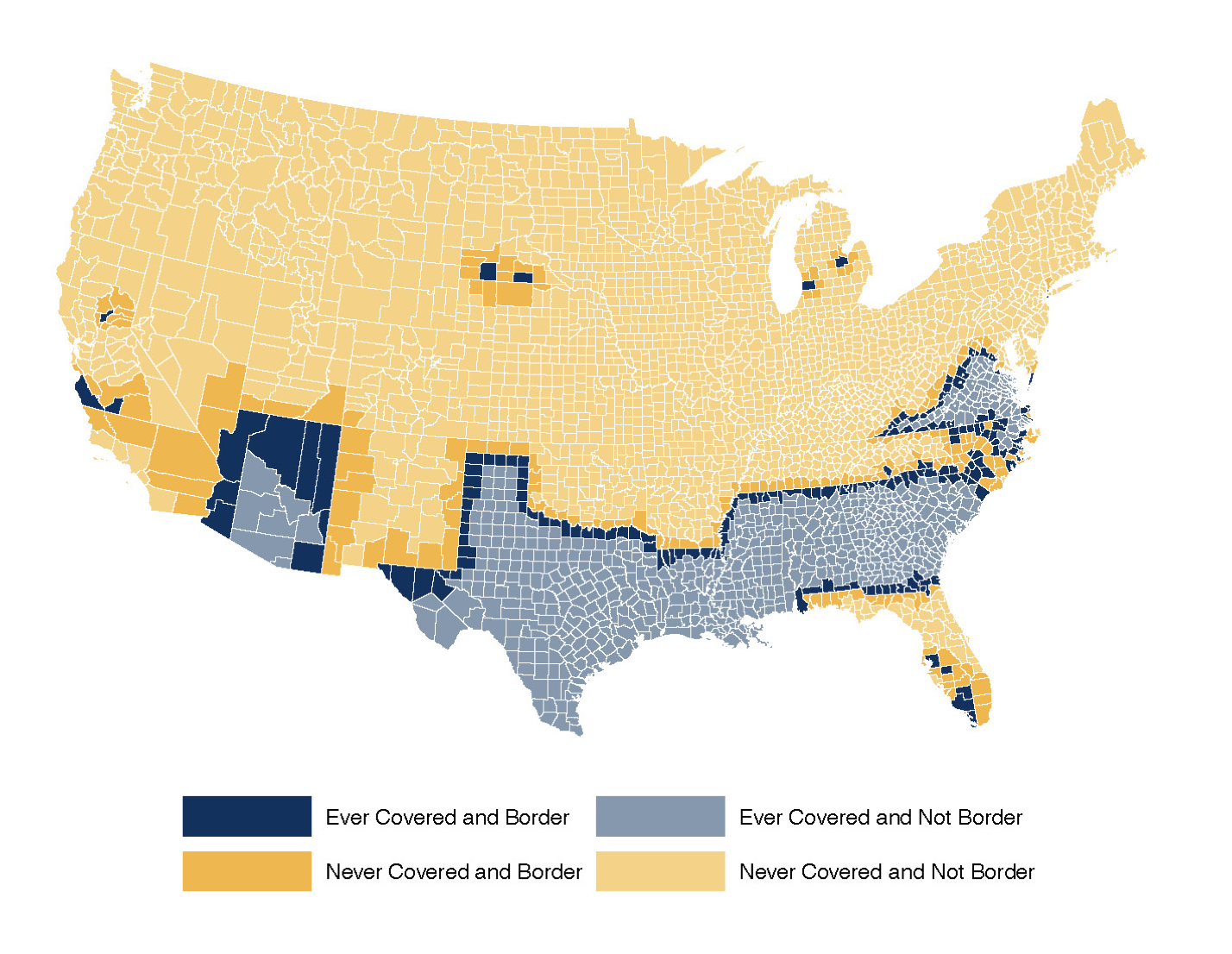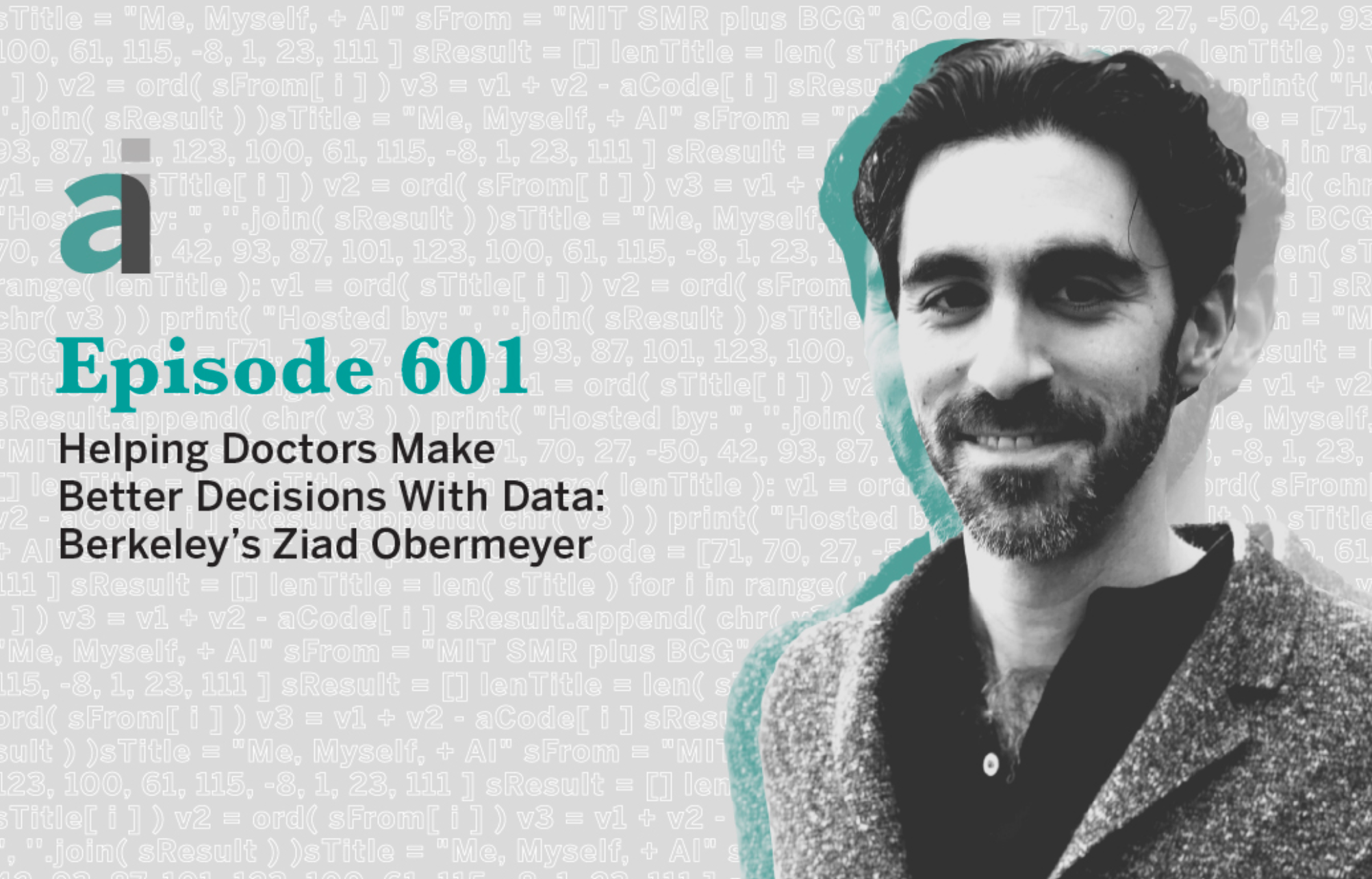“Minimum wage is one of these super polarizing issues, and with more polarization, it’s become a super symbolic issue.” A recent article in The Emory Wheel recaps David Card’s public talk at Emory University. Read more here.
Michael Reich in Berkeley News
“A minimum wage increase doesn’t kill jobs,” says Michael Reich. A new article from Berkeley News highlights a recent working paper by Reich and coauthors at IRLE on the impact of minimum wage laws on small businesses, which finds that higher wages eases employee recruitment and retention. Read the news piece here, and check out the full working paper.
How does increased minority enfranchisement impact public finance, preferences for public goods, and government fragmentation?
In 2013, the US Supreme Court issued a controversial ruling in the case of Shelby County v Holder, severely limiting the power of the federal government to enforce provisions of the 1965 Voting Rights Act (VRA). Before the ruling, changes to voting regulations by certain state and local governments were required to be “pre-cleared,” or deemed nondiscriminatory, before they were allowed to go into effect; after the ruling, it became the responsibility of disenfranchised voters to advocate for themselves and demonstrate that changes to voting laws were discriminatory.
This landmark ruling inspired a series of new studies examining the historical impacts of the VRA, in an effort to better understand its consequences and forecast the potential impacts of the Shelby decision. Raheem Chaudhry, a PhD candidate at the Goldman School of Public Policy, is leading one such study through his participation in the O-Lab’s Initiative on Racial Equity in the Labor Market.
Raheem’s research focuses on how the VRA impacted local and state revenues, as well as municipal spending on a variety of services and programs – hypothesizing that higher turnout among Black voters would lead to increased spending on public goods. Raheem used data from the Census of Governments, a survey conducted every five years, to get a detailed picture of government spending at all levels, including cities, counties, and special districts. He then compared jurisdictions covered by special provisions of the VRA that applied to only especially discriminatory districts to similar, geographically-adjoined districts, in order to isolate the impact of these parts of the Act. Subsequently, he was able to compare differences in spending in districts impacted to those unaffected.
Initially, Raheem expected to find increases in public spending in those jurisdictions with substantial Black populations that were identified by the VRA as particularly discriminatory (those required to pre-clear any future changes to voting laws). In actuality, he found that counties with larger non-white population shares demonstrated relative declines in government revenues and expenditures — but why? Raheem’s working theory, informed in part by existing literature, sees these changes as a response to increased integration. By ruling out tax base changes as the cause of declining public spending — there were no significant changes in home values or incomes during the period of study — Chaudhry’s work offers a compelling narrative that voters in these districts were less inclined to finance increasingly integrated public resources. Further evidence in support of this theory can be seen in decreased levels of public school enrollment, particularly among white students, from 1968 to 1972 – which suggests that families turned to private school in response to increased integration. Raheem also found relative increases in government fragmentation amongst counties targeted by special provisions of the VRA with larger non-white populations. This finding follows existing literature, and suggests a mechanism by which increasingly integrated counties sought to maintain local control over public finances.
Raheem’s project complements a growing body of work among economists that shows the limits to migration as a tool for surmounting racial income inequality. His work adds an important focus, however, on the role of political power in the success or failure of policies promoting access to resources such as education, transportation, and more. “I think the way that people traditionally think about this is, ‘How do we move kids to high opportunity areas?’ But you can also think about, ‘How do you transform the places kids already live?’ And one way you can do that is through the political process.” While Chaudhry’s project does not find an explicit positive impact of the VRA on local public spending, it nevertheless has important lessons for policymakers. In particular, his work shows the powerful way in which racial backlash can undermine efforts to more equitably allocate public resources.
Conrad Miller on Job Suburbanization & Black Employment
In a National Bureau of Economic Research video feature, Conrad Miller breaks down his paper at the intersection of racial equity, labor, and geography: “When Work Moves: Suburbanization and Black Employment.” Miller finds that highway construction resulted in job suburbanization, increasing the employment gap between black and white workers. Watch the video here.
Ziad Obermeyer on "Me, Myself, and AI"
In a recent episode of “Me, Myself, and AI,” a podcast from MIT’s Sloan School of Management, Ziad Obermeyer discusses his research on algorithmic bias and the use of artificial intelligence and machine learning in predictive analytics in health care. Listen to the episode here.
Research in Review: The Minimum Wage
Emmanuel Saez on State Wealth Taxes
In lieu of a federal wealth tax, state lawmakers in California, New York, and Washington have proposed legislation to tax billionaires on a state level. A recent article from the Washington Post explores these efforts, featuring commentary from Emmaneul Saez, who was enlisted by legislators to help draft the new policies. Check out the full article.
Hilary Hoynes in VoxEU
How does losing access to nutritional support impact families? A VoxEU column highlights research from O-Lab Faculty Director Hilary Hoynes and coauthors on the Special Supplemental Nutrition Program for Women, Infants, and Children (WIC). Researchers find that after losing access to the program, adult women consume less to shield children from nutritional losses. Read the article here.
Enrico Moretti on Tech Hubs
MIT’s Sloan School of Management recently highlighted a new working paper from Enrico Moretti and coauthors that examines the balance between local productivity and local costs in research and development, and finds that the productivity gains from a density of scientific talent generally outweigh the additional costs. Still, their findings suggest that cities with exceptionally high talent density have labor and real estate costs that dwarf gains. Learn more about the study.
Michael Reich on State Minimum Wage Increases
In CNN, Michael Reich discusses recent state minimum wage increases in the context of existing high inflation, suggesting that recent minimum wage increases will not necessarily result in dramatic increases in prices and labor costs in low-wage sectors. Read more here.
How do major flooding events impact women’s labor force participation in India?
As climate change increases the intensity of natural disasters, India’s monsoon season and resulting flooding increasingly threaten women’s autonomy. Globally, researchers are concerned that climate events are reversing progress made in women’s labor force participation, especially in low-income or rural areas. Elena Stacy, doctoral candidate in Berkeley’s Department of Agricultural and Resource Economics (ARE) and fellow through the O-Lab and Energy Institute’s Initiative on Equity in Energy and Environmental Economics, investigates this dynamic in detail in her project: “The Impact of Floods on Women’s Empowerment and Female Labor Force Participation in Rural India in the Age of Climate Change.”
Before beginning her PhD at UC Berkeley, Elena spent time as a Pre-Doctoral Research Assistant with Yale’s Economic Growth Center. There, she worked on a project designed to improve the cost and time-effectiveness of time use surveys, a type of survey module which measures how individuals allocate time towards different activities in a 24-hour period. Elena worked with Rohini Pande in Patna, Bihar, during the summer — India’s rainy season — and was often ankle-deep in water on her walk to work. It was the combination of these experiences that led Elena to consider using time-use data to better understand how women are impacted by climate disasters in India.
Elena’s project stands to explore the relationship between labor outcomes and climate impacts in a rural setting with an emphasis on gender disparities, filling an important research gap: while researchers have studied why women’s participation in the workforce is declining in India, and multiple studies have demonstrated how labor force participation advances women’s autonomy, few studies focus on how climate change complicates this dynamic. Elena’s paper contributes to this literature by leveraging time use data, which provides new insight into the drivers of low labor force participation among women. “If women are shifting away from labor, what is their time used on instead?”
To understand how women’s labor force participation is impacted by flooding, Elena cross-references time use data with geospatial data from the NASA MODIS satellite dataset. After converting geospatial images to usable data, she can estimate the severity and timing of flooding in different districts. Because the time use data is collected at different points in the year, it’s then possible to measure how women’s time use changes before and after a major flood event.
Eman Nazir, Undergraduate Research Apprentice
Hayley Lai, Undergraduate Research Apprentice
Through the 2022-2023 academic year, Elena has been conducting this work as part of O-Lab and the Energy Institute’s Initiative on Equity in Energy and Environmental Economics, which pairs graduate student fellows with undergraduate students, who benefit from research experience and graduate student mentorship. During her time as an undergraduate student at Berkeley, Elena spent time as an undergraduate research assistant herself, influencing her participation in the initiative: “My personal experience as an undergrad has definitely played a role in my own desire to be a graduate student mentor, and has also informed my approach in it.” Elena’s undergraduate mentees, Eman Nazir and Hayley Lai, have previous experience advocating for environmental justice and women’s empowerment; Elena described how it was important for her to steward their curiosity in her research questions, and provide plenty of country context, to lay a foundation for their data analysis tasks. Since beginning their partnership in Fall 2022, Eman and Hayley have built on their existing experience with R to tackle more advanced data cleaning tasks, and gained experience working with geospatial data. “They’ve put in a lot of work in terms of understanding the project, advancing their programming skills and conducting research,” says Elena. “I’m lucky to have two great, undergrad women in Econ on my mentee team.”
While Elena is still in the early stages of her project, she’s hopeful that her research will inform meaningful policy impact and spur future research on the intersection of gender and climate change in India. In the short term, as Elena cleans, links, and processes novel data, she intends to share it online, alongside her code, in order to make it more approachable for other researchers to examine the impacts of flooding. In the future, if her work does find that floods and severe climate events are disproportionately shifting women away from labor, she hopes that policymakers will make efforts to alleviate these disparities — for example, by specifically targeting women through the state’s existing government labor program, NREGA, or providing alternative childcare options in the event of school closures.
Hilary Hoynes and Reed Walker on the Future of Family
Hilary Hoynes and Reed Walker were recently cited in a New York Times op-ed by Paul Krugman on the importance of the Biden administration’s new support for child care and education. Among the cited work was Hoynes’ research on SNAP benefits and other safety net investments in children.
Sol Hsiang on The Economic Damages of Climate Change
Sol Hsiang’s research at the Climate Impact Lab was featured in the New York Times Magazine cover story this September. The data suggests that the impacts of climate change on the poorest Southern counties could lead to economic damages greater than a third of their total GDP. The article explores the mass migrations that such damages could invoke.
Take a look at the full article here!
Jesse Rothstein on Why Cal is America's Top College
Jesse Rothstein recently authored an opinion piece in the SF Examiner based on Forbes’ latest college rankings, in which UC Berkeley did much better than usual. According to Rothstein, “public colleges and universities are our key economic engine for upward mobility” because they make higher education much more accessible to low-income students. Read more here.
Promoting Economic Well-Being During COVID-19 through the Unemployment Insurance Program
Literature review by Ellora Derenoncourt, Claire Montialoux, and Joseph Broadus.
Perspectives on the Impact of the Expanded Child Tax Credit and the Development of a New Research Agenda on Child and Family Economic Well-Being
O-Lab Program Manager Joe Broadus, Faculty Director Hilary Hoynes, and colleagues at the Urban Institute share key takeaways from a convening gathering stakeholder input on a new research agenda on child and family economic well-being.
Understanding the Distributional Impact of New Electricity Technologies in Senegal
How do different electricity technologies impact the way that we use energy — and how should technological roll-outs be targeted in order to achieve efficiency gains to both customers and utilities? Abdoulaye Cissé, a Ph.D. candidate in Agricultural and Resource Economics, has spent his time as a Fellow through O-Lab and Haas Energy Institute’s Initiative on Equity in Energy and Environmental Economics asking these questions.
Cissé’s research aims to better understand the energy and electricity value chain in Senegal, where he was born. Cissé grew up hearing conversations about electricity, and his project was heavily inspired by energy issues his family and community faced at home. "There’s a lot of discussion around electricity that I wound up hearing, a lot of issues I grew up experiencing. If you look at the last two changes of power in Senegal, many would argue that, at least partially, they had to do with electricity shortages being quite significant,” he said.
After reading a news article in 2020 citing transparency issues around electricity rates and payment structures, Cissé approached Senegal’s state electricity utility, Société Nationale d’Electricité du Senegal — or SENELEC — in the midst of a new technology rollout. With the provision of smart and prepaid meters, customers would now be able to see their real-time energy consumption and price, with the goal of encouraging cost-saving and energy conservation. Meters also report back to the utility company, enabling informed distribution decisions and limiting losses. Cissé is investigating how the roll-out might impact consumers differently. He proposed a research project to examine the project’s welfare implications in detail; SENELEC was responsive and agreed to support his research. For SENELEC, an analysis of the impact of new technologies on electricity use is crucial to the reduction of “technical losses” (for example, electricity lost through transmission, distribution, and measurement systems), as well as non-technical losses (such as unpaid bills) at points of consumption.
To study the impacts of the new metering technologies, Cissé is examining billing and payment records, provided by the state energy utility, to understand how much consumers pay for electricity and whether bills are paid on time. Payment data is then cross-referenced with electricity consumption data, building a consumption and purchase history for 1.7 million customers over ten years. Each piece of billing data is associated with an address, allowing Cissé to cross-reference consumer data with regional and local satellite data estimating different economic variables. Altogether, these data allow Cissé to analyze a variety of predictors for Senegalese electricity consumption and payment, isolating the impact of new technologies on energy use. In particular, the data will help Cissé learn whether - and how - consumer decisions may be changing as a result of the new technologies.
Cissé’s project provides crucial insights on the general economic impact of electrification as well as potential distributional consequences of the rollout of the technology, and the analysis of SENELEC’s data alongside satellite data will allow him to see how the economic gains from electrification may accrue differently across regions and income groups. This is especially important in Senegal, where Independent Power Producers (IPPs) – private companies that generate electricity for sale to SENELEC – are often located in rural areas, yet produce power for urban centers. The costs of power generation in these rural areas can be substantial, and include land clearance, noise pollution, emissions from non-renewable power generation, and spillover effects of power plants on local ecosystems. These impacts burden rural populations, while the benefits of electricity generated accrue more to urban residential and commercial clients. Accordingly, the design of power generation to increase electricity access has distributional impacts that warrant further analysis.
Ella Tyler, Undergraduate Research Apprentice
Analyzing ten years of electricity bills and purchases, across an entire country, is no small feat, and Abdou has benefitted in his work from the support of undergraduate research assistants he is mentoring through the Initiative on Equity in Energy and Environmental Economics. As part of this initiative, Abdou has mentored 4 students, providing research training experience and guidance on careers in environmental policy and research. Ella Tyler, for example, worked with Abdou through the 2021 - 2022 academic year; she brought a strong data science background to the project and used her Python skills to help Abdou with data analysis. At the same time, he offered her training in research methods and helped her set up a job as a Research Assistant in Sierra Leone.
As he enters his fourth year in the Ph.D. program, Cissé is nearing the final stages of his data collection work: combining geocoordinate data from SENELEC with remote sensing data and identifying the economic metrics that make the most sense to consider in his analysis. With funding from O-Lab and the Energy Institute, Cissé also hopes to collect primary data on a subset of households next spring, in order to get to know clients beyond their consumption data and consider more predictors of behavior around electricity consumption and payment.
Cissé is regularly in touch with SENELEC, and hopes to return to the utility with policy recommendations related to the impact of meters on energy demand, how to target roll-outs to different types of customers, and the impact of the meters on the economic conditions of residential and commercial customers. He is optimistic about the potential for his research to inform policy on how to best strategize these investments.
Emmanuel Saez and Gabriel Zucman in the Financial Times
How will raising interest rates affect inequality and economic mobility for low-income families? In a new Financial Times analysis, Gillian Tett highlights recent work from Emmanuel Saez and Gabriel Zucman in analyzing how Fed policy may undo some of the gains from the COVID-19 economic recovery. Read the article here.
Hilary Hoynes in Equitable Growth
Each piece of legislation considered by the US Congress receives a score from the Congressional Budget Office, which estimates the cost of the legislation within a ten year budget window. However, this approach neglects the long-term benefits of income support and social safety net programs, writes Hilary Hoynes in a new piece for Equitable Growth. Read the full article.
Meredith Fowlie on the Cost of Electricity in California
Research from Meredith Fowlie & coauthors at the Energy Institute at Haas is the centerpiece of a Washington Post analysis on the cost of electricity in California. The article describes how California’s electricity tariffs add about $600 to the annual running cost of an electric vehicle in California, on average. Read the article here.




























